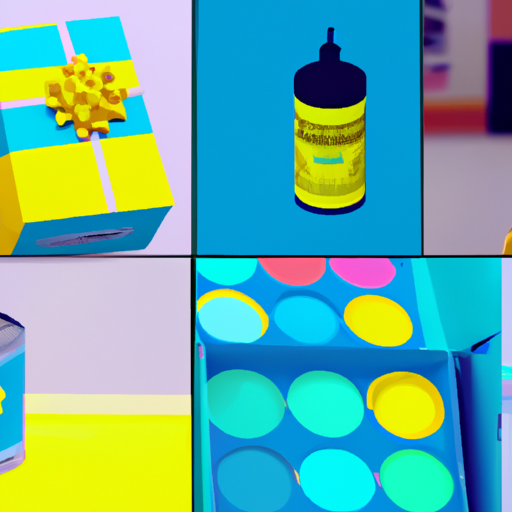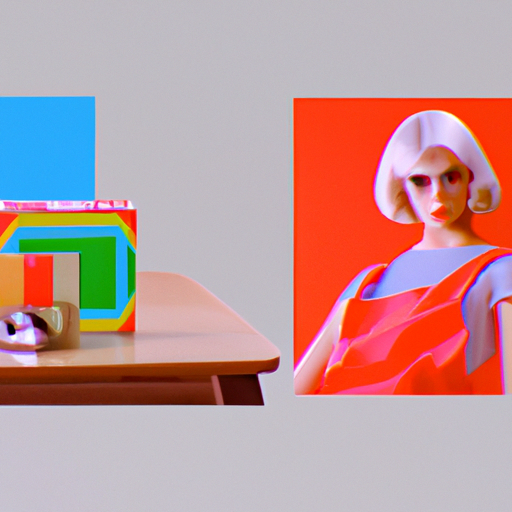
-
Table of Contents
Package Design for DIY and Craft Supplies

Package design plays a crucial role in the success of any product, and this is especially true for DIY and craft supplies. The packaging not only serves as a protective covering for the product but also acts as a marketing tool that can attract potential customers and communicate the brand’s values. In this article, we will explore the importance of package design for DIY and craft supplies, discuss key elements to consider when designing packaging, and provide examples of successful package designs in the industry.
The Importance of Package Design
1. First Impression:
- The package design is the first thing that catches the consumer’s eye on the store shelf or online marketplace. It creates the initial impression of the product and influences the consumer’s decision to purchase.
- A well-designed package can evoke emotions, create curiosity, and generate interest in the product, increasing the chances of a sale.
2. Brand Identity:
- Package design is an opportunity to establish and reinforce the brand’s identity. It should align with the brand’s values, target audience, and overall aesthetic.
- Consistency in package design across different products helps in brand recognition and recall.
3. Differentiation:
- In a crowded market, DIY and craft supplies need to stand out from the competition. Package design can be a powerful tool for differentiation.
- Unique and innovative packaging can attract attention and make the product memorable.
4. Information and Communication:
- Package design should effectively communicate the product’s features, benefits, and usage instructions.
- Clear and concise information on the packaging helps consumers make informed decisions and reduces the likelihood of post-purchase dissatisfaction.
Key Elements of Package Design
1. Visual Appeal:
- The package design should be visually appealing and eye-catching. It should use colors, typography, and graphics that resonate with the target audience.
- Consider the overall aesthetic of the DIY and craft supplies industry and align the design with the latest trends.
2. Functionality:
- While aesthetics are important, the package design should also be functional. It should protect the product from damage during transportation and storage.
- Consider the size, shape, and material of the packaging to ensure it is suitable for the product and can be easily opened and resealed.
3. Branding:
- Package design should reflect the brand’s identity and values. Use consistent branding elements such as logos, colors, and taglines.
- Consider the target audience and their preferences when designing the packaging. For example, if the target audience is children, use vibrant colors and playful graphics.
4. Information Hierarchy:
- Organize the information on the packaging in a logical and easy-to-read manner. Use headings, subheadings, and bullet points to highlight key information.
- Ensure that important information such as product name, quantity, and usage instructions are prominently displayed.
5. Sustainability:
- With increasing consumer awareness about environmental issues, sustainable packaging is gaining importance.
- Consider using eco-friendly materials and designs that minimize waste and are recyclable or biodegradable.
Examples of Successful Package Designs
1. Martha Stewart Crafts:
Martha Stewart Crafts is known for its elegant and sophisticated DIY and craft supplies. Their package design reflects this aesthetic with clean lines, muted colors, and minimalistic graphics. The packaging also prominently features Martha Stewart’s signature, reinforcing the brand’s identity.
2. Crayola:
Crayola, a leading brand in art supplies, has a playful and vibrant package design that appeals to children. The packaging uses bold colors, fun illustrations, and clear product names to attract young consumers. The use of transparent windows on some packaging allows customers to see the colors of the crayons or markers inside.
3. Cricut:
Cricut, a popular brand for cutting machines and accessories, has a sleek and modern package design. The packaging uses a combination of bold typography, high-quality product images, and a consistent color scheme to create a cohesive brand identity. The design also emphasizes the versatility and ease of use of their products.
Summary
Package design plays a vital role in the success of DIY and craft supplies. It creates a strong first impression, communicates the brand’s identity, differentiates the product from competitors, and provides essential information to consumers. When designing package for DIY and craft supplies, it is important to consider visual appeal, functionality, branding, information hierarchy, and sustainability. Successful package designs in the industry, such as Martha Stewart Crafts, Crayola, and Cricut, showcase the importance of aligning the design with the brand’s values and target audience. By investing in thoughtful and well-executed package design, DIY and craft supply brands can enhance their product’s appeal and increase their chances of success in the market.
